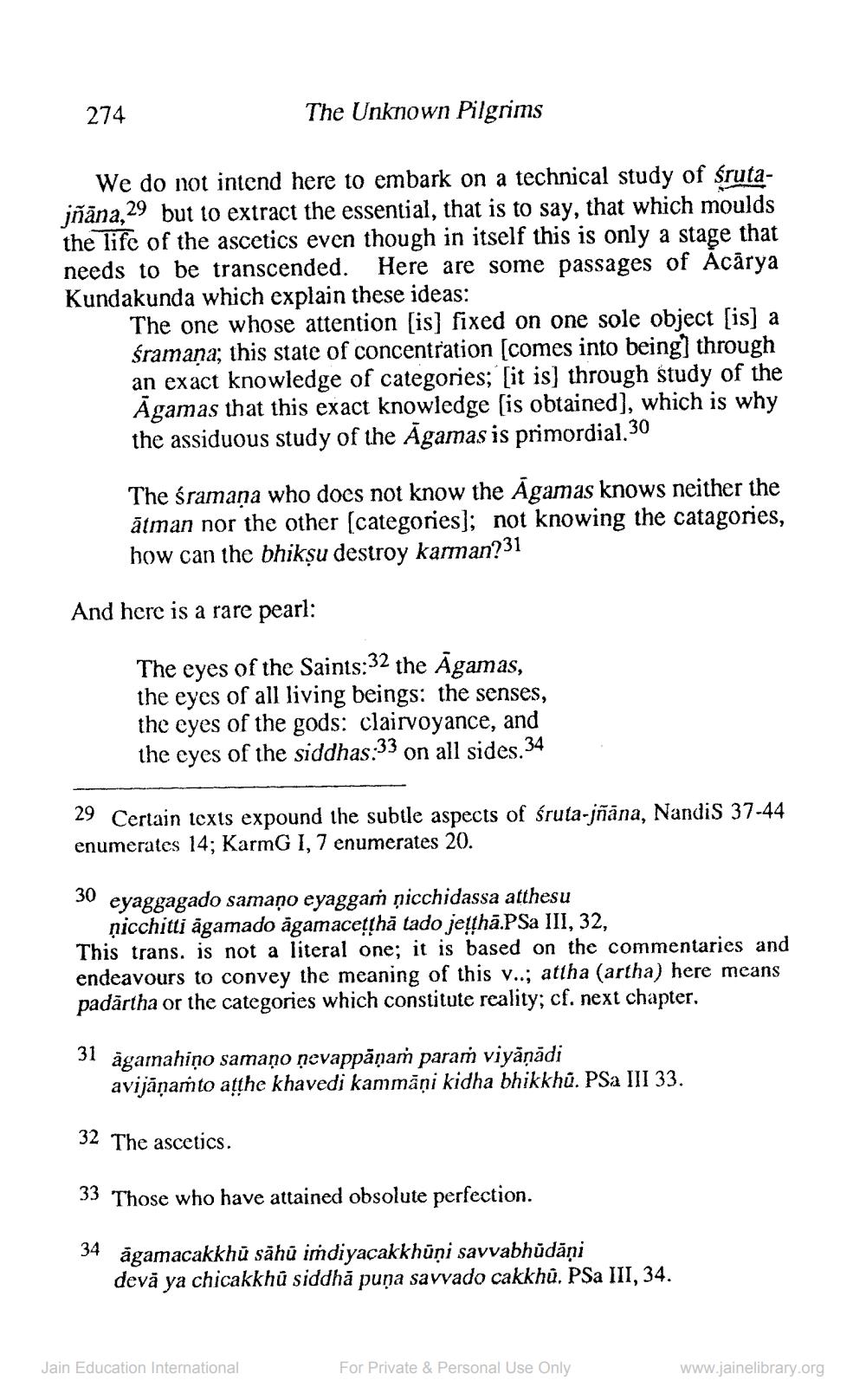________________
274
The Unknown Pilgrims
We do not intend here to embark on a technical study of śrutajñāna,29 but to extract the essential, that is to say, that which moulds the life of the ascetics even though in itself this is only a stage that needs to be transcended. Here are some passages of Acārya Kundakunda which explain these ideas:
The one whose attention [is] fixed on one sole object (is) a śramana; this state of concentration (comes into being] through an exact knowledge of categories; [it is) through study of the Agamas that this exact knowledge is obtained), which is why the assiduous study of the Āgamas is primordial. 30
The śramaņa who does not know the Āgamas knows neither the ātman nor the other (categories]; not knowing the catagories, how can the bhikṣu destroy karman231
And here is a rare pearl:
The eyes of the Saints:32 the Āgamas, the eyes of all living beings: the senses, the eyes of the gods: clairvoyance, and the eyes of the siddhas:33 on all sides. 34
29 Certain texts expound the subtle aspects of śruta-jñāna, Nandis 37-44 enumerates 14; KarmGI, 7 enumerates 20.
30 eyaggagado samaņo eyaggam nicchidassa atthesu
ņicchitti agamado agamacetthā tado jethā.PSa III, 32, This trans. is not a literal one; it is based on the commentaries and endeavours to convey the meaning of this y..; attha (artha) here means padārtha or the categories which constitute reality; cf. next chapter.
31 agamahiņo samaņo nevappāņam paraṁ viyaņādi
avijāņaṁto athe khavedi kammāņi kidha bhikkhu. PSa III 33.
32 The ascetics.
33 Those who have attained obsolute perfection.
agamacakkhu sāhū imdiyacakkhuni savvabhūdāni devă ya chicakkhů siddhă puņa savvado cakkhu. PSa III, 34.
Jain Education International
For Private & Personal Use Only
www.jainelibrary.org




